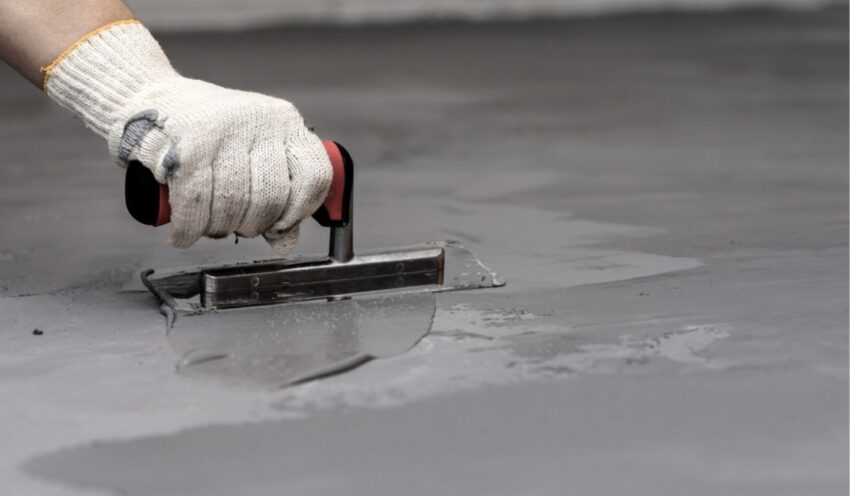Prepare the area where you will pour by clearing it of grass, roots and vegetation. Additionally, check that its subgrade is suitable by inspecting for lumps or soft spots in its composition.
Subgrade
Excavating and pouring concrete directly on loose soil are not viable solutions; rather, a sub-base layer must first be created using gravel or crushed stone that has been compacted to the appropriate grade before excavation begins.
Before beginning to lay a concrete slab, it is wise to utilize a carpenters square and level to evaluate whether the ground slopes. A sloped base will cause cracking, shifting and other forms of concrete damage that will cost time and money to fix later.
Next, use a hand tamper to compress the gravel and earth subgrade. Take care not to over-tamp, as excessive pounding can weaken concrete. After surface water has gone away, smooth the surface using a bull float before rounding out edges with an edger; use grooved slabs every 10ft so shrinkage cracking doesn’t impede on your work.
Forms
When building a concrete slab, forms must be used to hold and shape the concrete. Form boards typically consist of 2×4 boards constructed of lumber. You should cut a piece of lumber that extends longer than any of your longest sides to form one of your forms for the first side of the slab and nail it to a corner stake to level it.
Laying a concrete slabs Melbourne is a key part of any homebuilding project, yet is often neglected or put off due to complexity. While the task itself shouldn’t be too challenging, proper execution requires planning and thorough work in order to be completed successfully.
Once the form is complete, granular fill is placed and compacted into place. This process provides concrete with something other than soil to rest on when set into place.
Form boards should then be braced using pairs of 2x4s spaced every foot, using 16D duplex nails (double-headed nails) to connect them and bracing. You should also nail in place any required reinforcement rebar chairs in order to strengthen concrete as required.
Concrete
Before pouring concrete, use a bull float to level holes and ridges and partially embed aggregate. This prepares the surface for smoothing as well as giving a denser consistency for more meticulous finishing. When beginning this process, wait until all bleed water has completely dissipated so as to prevent dusting, scaling or cracking when hardening begins.
If your slab is large enough, dividing it into sections and filling each of them on different days can significantly shorten its completion time and help prevent concrete from buckleing or moving during setup. It will also prevent it from shifting once set.
Once the concrete is set in place, make control joints (CJs), commonly referred to as jointing, to alleviate tension caused by drying shrinkage. They may be tooled in while it’s plastic or saw cut after hardening has taken place – either way they should be placed at least 1/4 way down the depth of your slab.
Finishing
Concrete may be one of the toughest building materials available, yet it can also be difficult to work with. Finding an approachable professional who knows their way around concrete will go far toward creating long-lasting and beautiful designs for any new concrete slabs or pavement projects.
Just after pouring, use a bull float or darby to level out any ridges and slightly embed aggregate. This will give the slab an even surface that’s ready for more meticulous finishing work.
Once the float has been used, allow any excess “bleed water” to disappear from the surface of the concrete. Throwing more water on could further weaken it and potentially cause cracking later.
f the slab will serve as the foundation of a house, press 1/2-inch anchor bolts into it before it hardens – placing these one foot from corners and every six feet around door openings to avoid cracking. To further ensure crack-free surface conditions, groove the concrete using a grooving tool after all of its moisture has dissipated from its surface.

